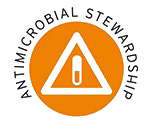June 1, 2018 -ABSTRACT Background:
Clinical diagnosis of infection in chronic wounds involves assessment of signs and symptoms based on visual inspection and microbiological cultures. This process is subjective and delayed culture results often prevent prompt treatment. Fluorescence imaging has recently been introduced as a new method to visualize the presence of
… Read More
May 1, 2018 -ABSTRACT Aim:
To compare the efficacy of standard clinical signs and symptoms (CSS) guided-Levine swabbing with autofluorescence (AF) imaging-guided swabbing to detect bacteria in diabetic foot ulcers.
Procedure/Method: Twenty-nine participants with diabetic foot ulcers were recruited between December 2014 and February 2015. Diabetic foot ulcers (n=31) were evaluated for CSS
… Read More
April 30, 2018 -An infection is a serious complication of a foot ulcer and requires immediate treatment. Since not all infections are treated the same way, accurate sampling is critical to identify the causative pathogens, and ensure appropriate treatment selection. Read More
January 1, 2018 -ABSTRACT Objective:
Current standard diagnostic practice of bacterial infections by visual inspection under white light is subjective, and microbiological sampling is suboptimal due to high false negative rates and the lengthy time needed for culture results to arrive. The MolecuLight i:X Imaging Device attempts to combat the issues faced in standard
… Read More
August 2, 2017 -ABSTRACT Objective:
Bacteria in chronic wounds are invisible to the naked eye and can lead to delayed wound healing. Point-of-care bacterial fluorescence imaging illuminates a wound with 405 nm light, triggering bacteria to produce red fluorescence and enabling real-time bacterial localization. Prospective, single-blind clinical trials (clinicaltrials.gov #NCT02682069,#NCT03091361) were conducted to
… Read More
February 28, 2017 -ABSTRACT
Clinical wound assessment involves microbiological swabbing of wounds to identify and quantify bacterial species, and to determine microbial susceptibility to antibiotics. The Levine swabbing technique may be suboptimal because it samples only the wound bed, missing other diagnostically relevant areas of the wound, which may contain clinically significant bacteria.
… Read More
January 1, 2017 -ABSTRACT
The MolecuLight i:X Imaging Device is a portable, noninvasive, real-time camera used to visualize the bacterial load in a wound. It uses violet light illumination and a dual bandpass optical filter to capture the fluorescence of endogenous structures in the tissue matrix and harmful bacteria. The MolecuLight i:X captures images
… Read More 









